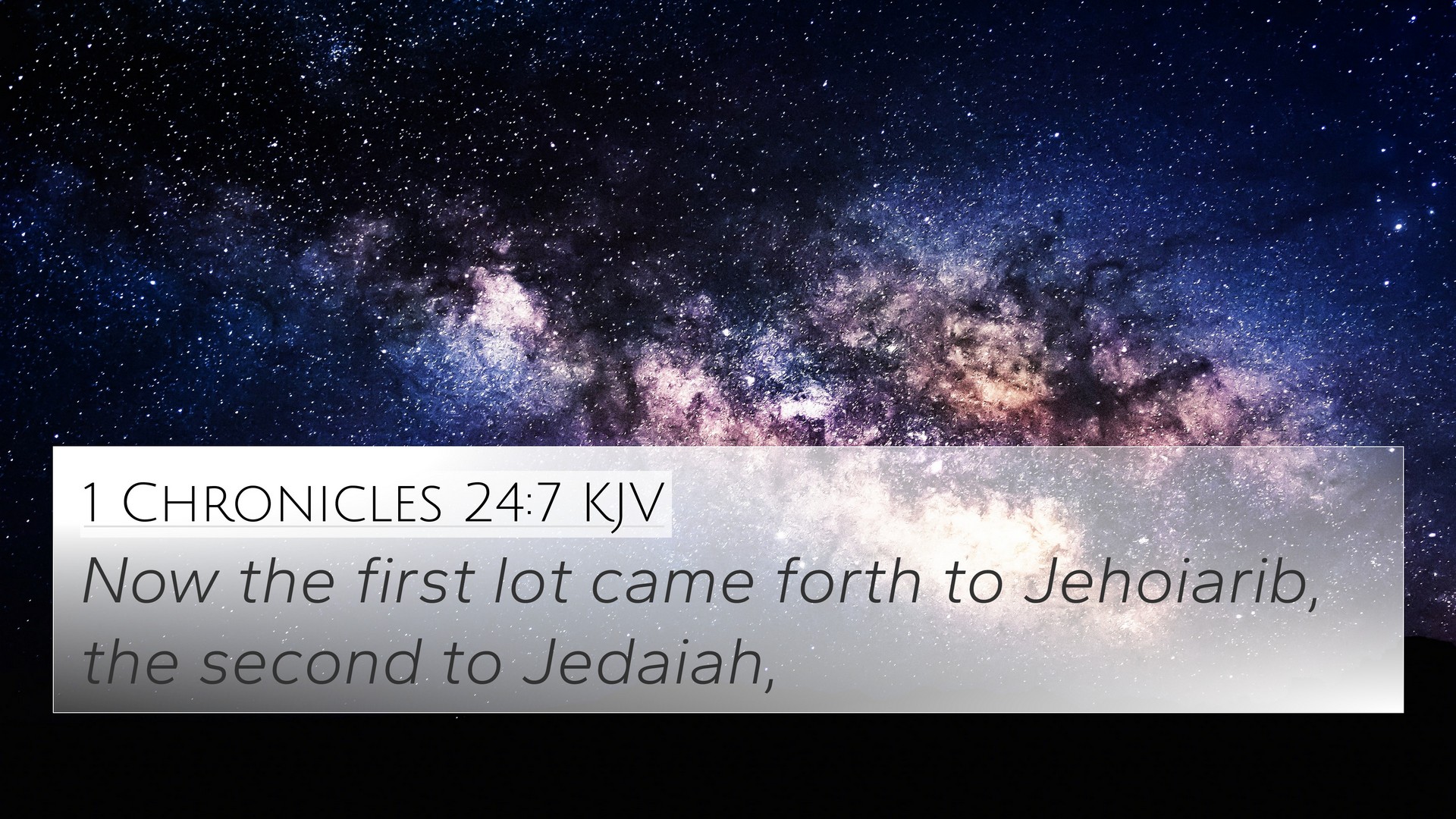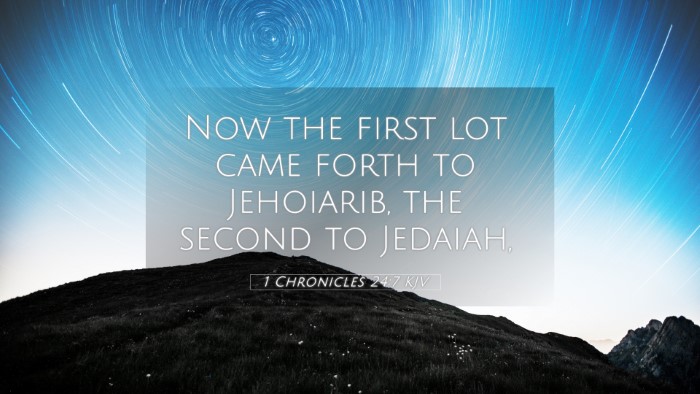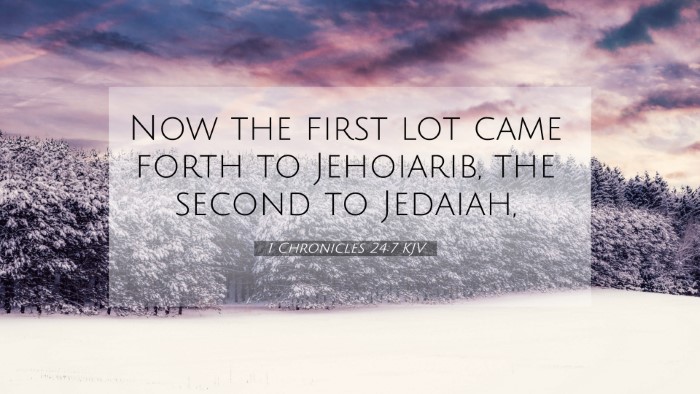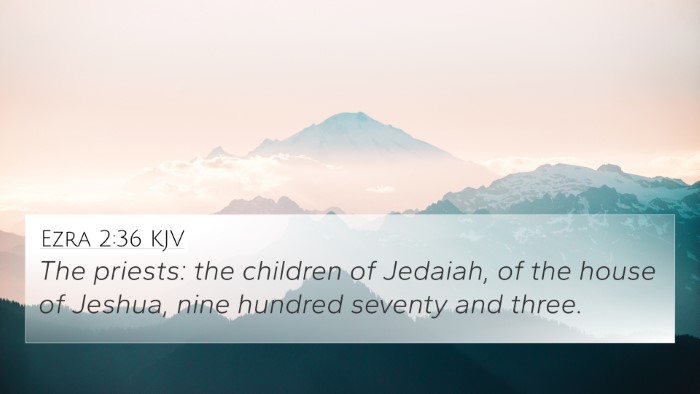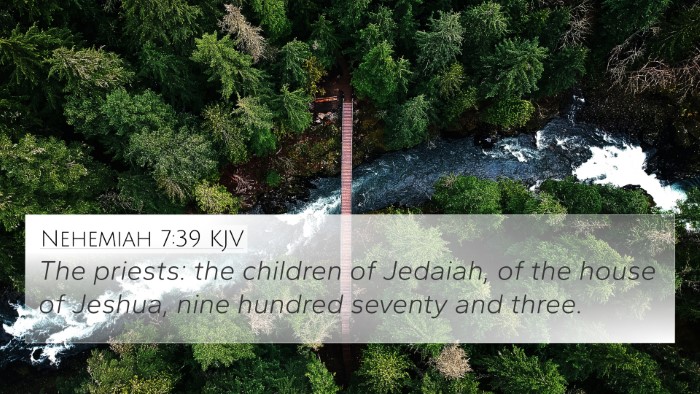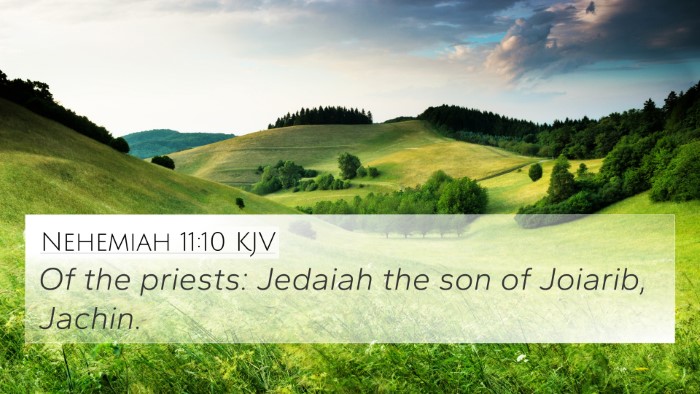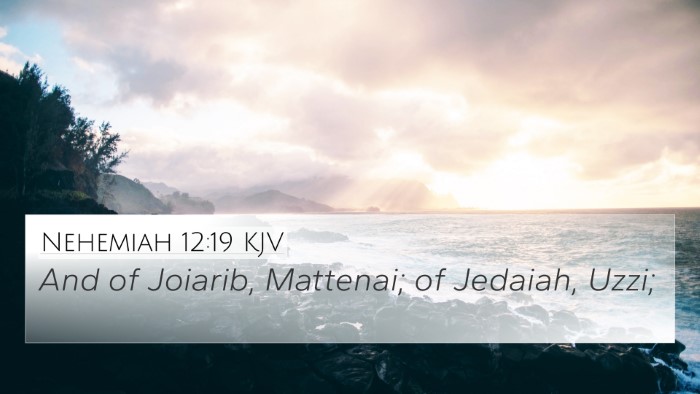Understanding 1 Chronicles 24:7
1 Chronicles 24:7 states: "The first lot came out for Jehoiarib, the second for Jedaiah." This brief verse introduces us to two of the twenty-four priestly divisions established by David for the service in the temple, highlighting the structured approach to worship and religious duties in Israel.
Summary of the Verse Meaning
This verse signifies the organization and order within the Levitical priesthood. The lots determined which priestly families would serve in the temple, emphasizing fairness and divine providence in religious appointments.
Commentary Insights
Matthew Henry's Commentary
Matthew Henry notes that this division of priests was crucial for maintaining order in worship practices. The casting of lots illustrates God's sovereign hand in appointment, reflecting His control over the priestly duties and serving as a unifying structure for the Israelites.
Albert Barnes' Commentary
Albert Barnes emphasizes the significance of the first lot, Jehoiarib, as indicative of the notion that those serving in the temple carry great responsibility. He highlights that this structure allowed for all priests to participate equitably, showing God's desire for organized worship through designated roles.
Adam Clarke's Commentary
Adam Clarke elaborates on the implications of this priestly division, suggesting that it was not only a precedent for service but also a reflection of the continual lineage of priestly leadership established by God. Clarke indicates that these divisions facilitated a more engaged and participatory form of worship among the people.
Cross-References and Connections
This verse is interconnected with various Bible passages that elucidate themes of divine appointment, worship organization, and priestly duties. Relevant cross-references include:
- 1 Chronicles 23:4: This passage describes the division of the priests and Levites, elaborating on the numbers and roles each group played in temple service.
- Exodus 28:1: Here, God appoints Aaron and his sons as priests, establishing the foundation for the priestly lineage that includes those mentioned in 1 Chronicles 24.
- Hebrews 7:11-14: This New Testament reference discusses the priesthood of Christ as being superior to that of the Levitical priests, connecting the Old Testament structure to New Testament theology.
- Luke 1:5-9: The narrative of Zechariah, a priest of the division of Abijah, shows the continued relevance of priestly divisions in the time of Christ.
- Numbers 3:6-10: This portion of Numbers outlines the duties assigned to the Levites, correlating with their roles as established in 1 Chronicles.
- Malachi 2:7: Highlights the importance of the priest's role in conveying knowledge and preserving covenant fidelity, relevant to the division of roles in 1 Chronicles 24:7.
- Acts 6:7: The growth of the Church and the role of priests during the apostolic period may be seen as a continuation of this organizational principle of worship established in the Old Testament.
Thematic Connections and Conclusions
The themes found in 1 Chronicles 24:7 emphasize the critical nature of structured worship in both the Old Testament and its evolving significance in the New Testament era. Understanding the connections between these verses provides deeper insights into God's ongoing plan and the harmony between the scriptures.
By examining the links and cross-references between these passages, believers can appreciate God’s design for order and equity in worship across different eras. The insights drawn from various commentaries reinforce the notion that worship is not only about individual piety but also about community structure and divine appointment.
Tools for Bible Cross-Referencing
For further study, utilizing a Bible concordance can help identify these cross-references more easily. Various Bible cross-reference guides are available, facilitating cross-referencing Bible study and deepening understanding of inter-Biblical dialogue.
How to Engage with Cross-References
When studying scripture, consider questions like:
- What verses are related to 1 Chronicles 24:7?
- How do 1 Chronicles 24:7 and Exodus 28:1 connect?
- Which other scriptures illuminate the themes found in 1 Chronicles 24:7?
Conclusion
In conclusion, 1 Chronicles 24:7 serves as a foundational verse that signifies God's ordained structure for worship among His people and illustrates the continuity of His plan from the Old Testament into the New Testament. A thorough comprehension of its context and related scriptures enhances the believer's understanding and inspires true reverence in worship.
